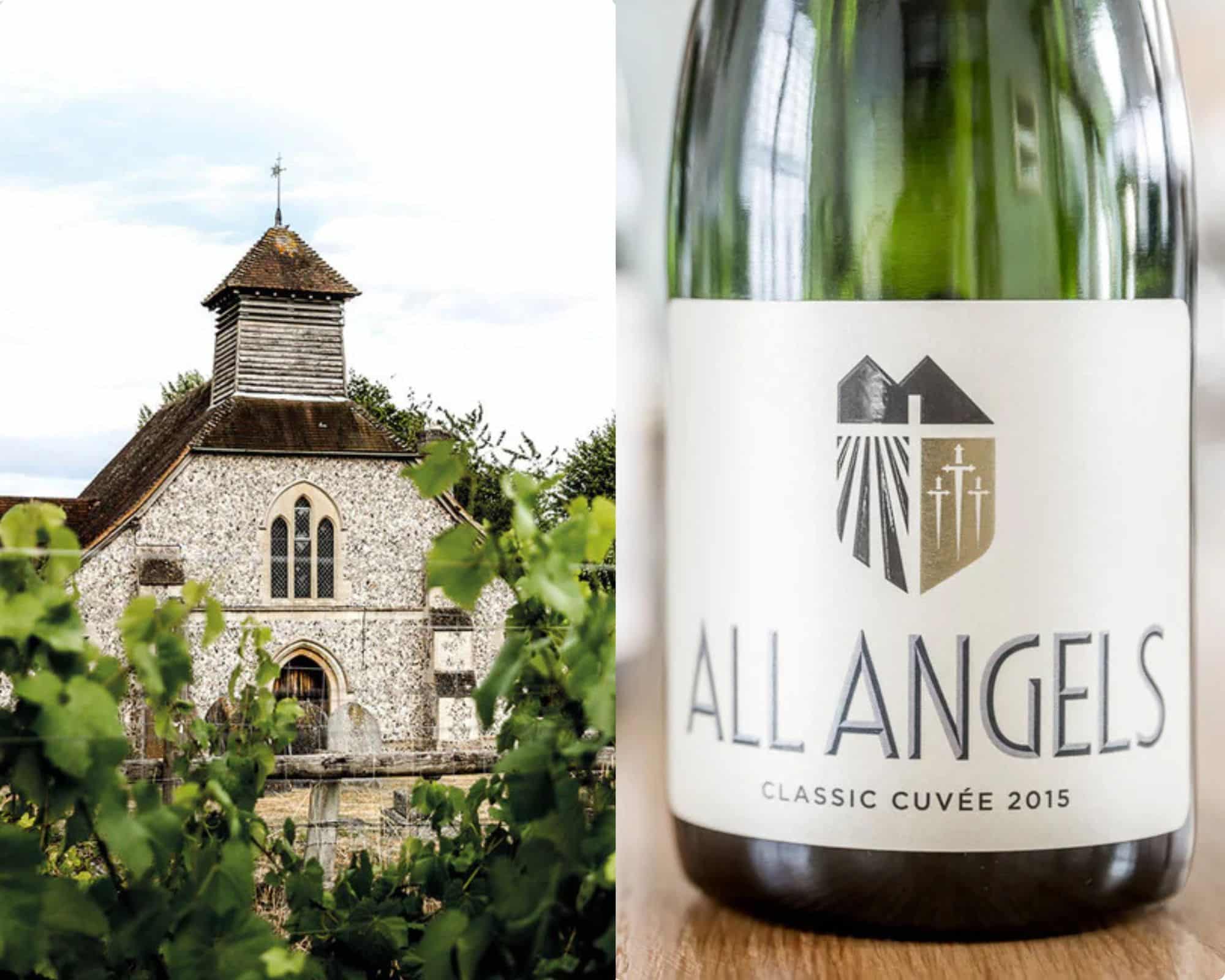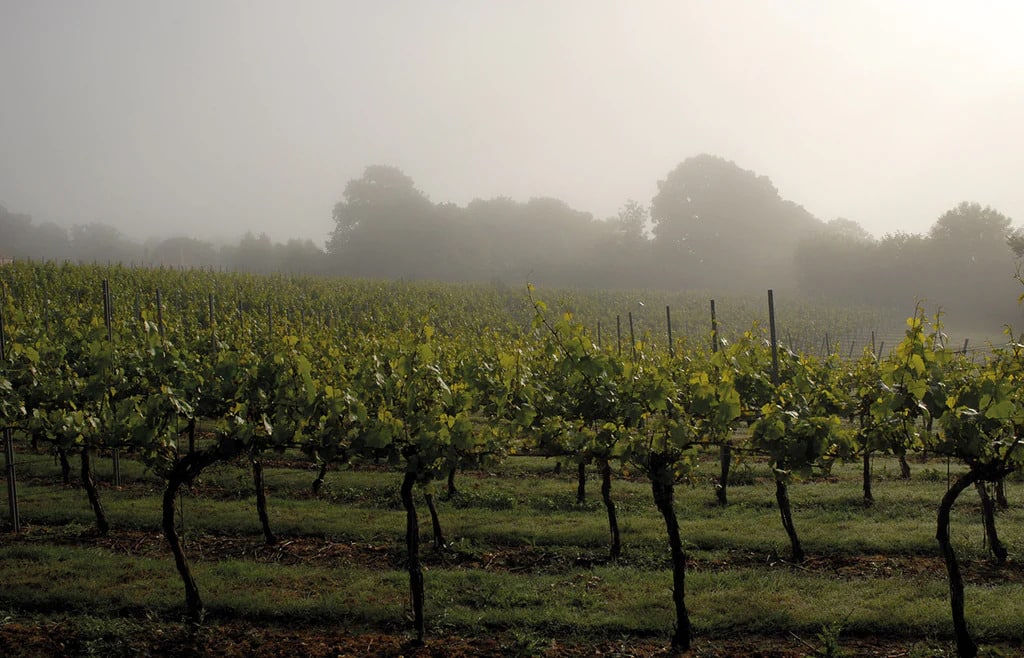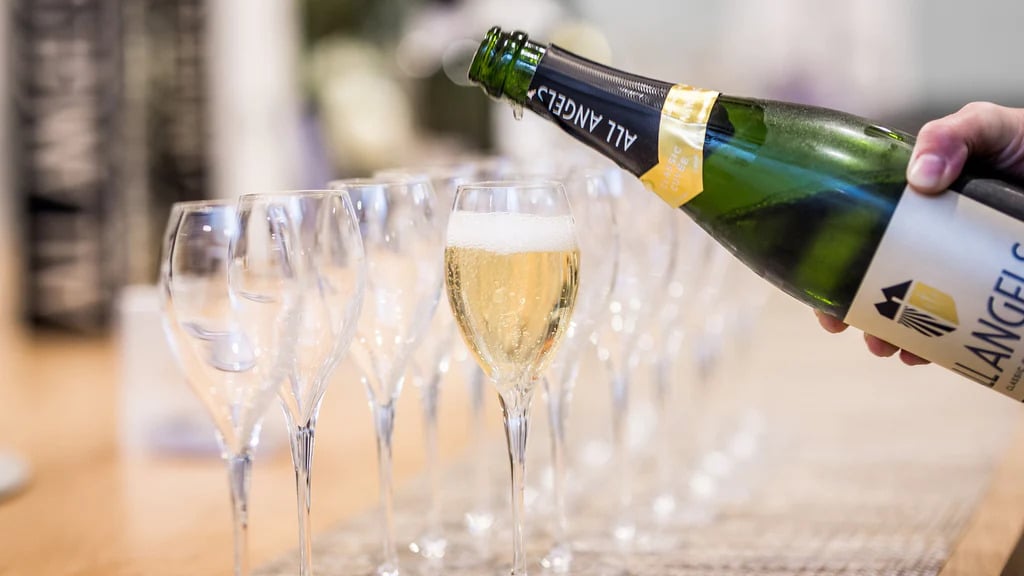The resurrection of the English vineyard: Encountering the mysticism of wine in a glass of sparkling white
It seems fitting that during Easter tide we should take the opportunity to consider and celebrate the resurrection of English winemaking. While grapes have been cultivated in parts of the British Isles since Roman times – the medieval Domesday book records at least 40 vineyards, and once upon a time both Westminster and Holborn were The post The resurrection of the English vineyard: Encountering the mysticism of wine in a glass of sparkling white appeared first on Catholic Herald.

It seems fitting that during Easter tide we should take the opportunity to consider and celebrate the resurrection of English winemaking. While grapes have been cultivated in parts of the British Isles since Roman times – the medieval Domesday book records at least 40 vineyards, and once upon a time both Westminster and Holborn were the sites of renowned vineyards – the last 500 years oversaw the terminal decline and complete disappearance of viticulture in Britain.
The seminal text on British winemaking history and culture, Edward Hyams’s The Grapevine In England, was written in 1949 and appeared at a time when there was no living memory of the practice and grave doubts lingered even as to its possibility. Yet in just the last three decades British viticulture has not only made a comeback but now produces some of the most excellent sparkling whites in all of Europe.
I wish, then, during this great festive period, to draw attention to one particular vineyard: All Angels, in Enborne, in the leafy heart of Berkshire. The history underlying this vineyard is extraordinary, with a known legacy of Roman grape-growing and storied battlefields of the English Civil War. Yet it was not until 2009 that the vine made a return; its wine is named in honour of St Michael & All Angels, after the tiny 12th-century chapel that sits nestled on the vineyard’s borders.
RELATED: Drinking to the glory of God with ‘Monastic Order‘
As I break open my two bottles, pouring myself a glass of the 2014 vintage, I consider the importance of naming practices – particularly as Catholics have understood this through the ages. The practice of naming one’s child after a saint creates a binding link between the two individuals. The spiritual powers of the saint are being invoked for the flourishing of the child and the virtuous fruits of the child will, in turn, honour the saint.
In naming these wines after the church of St Michael and All Angels the winegrowers have even, if only unintentionally, created a symbolic link to the angelic realm which has been honoured with nearly 900 years of prayer in the local church.

And what excellence I encounter again in this drink! The 2014 meets the palate with fresh spring apples with a crispness and acidity that lingers perfectly; savouring further I discover citrus fruits laden with creamy tones.
The art of winemaking is really about man’s ability to read and make the best use of a land’s terroir – its sense of place. Encompassing the fullness of the environment – the soil, topography and climate – this pursuit rewards those who truly love the land. Understanding the particular rhythms and qualities, the genius loci, cannot really be reduced to material features, either.
What the monastics would have intuitively understood, as they selectively bred all of the grape varieties we have today, was that at the heart of the great rhythm of nature’s cycles was a divine luminosity and angelic undercurrent. As the prayers of the worshippers at St Michael and All Angels seeped into the ground and sanctified the nature around it, the eyes of pre-modern man would have opened up the divine secrets of the book of nature.

This is what St John Henry Newman meant when he told us of the man who “when examining a flower, or a herb, or a pebble, or a ray of light, which he treats something so beneath him in the scale of existence, suddenly discovered that he was in the presence of some powerful being who was hidden behind the visible things he was inspecting, who, though concealing his wise hand, was giving them their beauty, grace and perfection, as being God’s instrument for the purpose, nay, whose robe and ornaments those objects were, which he was so eager to analyse?”
Thus we encounter the mysticism of wine. In the sacred practices of viticulture these angelic qualities are captured in a bottle, the excellence of which brings honour to the great angelic beings our senses encounter. As I continue to sip the luminous wonders of this great English sparkling white it occurs to me that I am being blessed with the edges of angelic robes captured as if by magic by a great artist: the winemaker who mimics the Great Husbandsman in whose vineyard we all labour.
Just as the church of St Michael and All Angels has blessed the land at Enborne for centuries, now a further blessing is added: that of great winemaking. I recommend that you discover the joys of All Angels for yourselves.
Brian Scarffe is the founder of Monastic Order: www.monasticorder.co.uk
St Michael and All Angels
THE DARLEY FAMILY took over Church Farm at Enborne in 2009. Having commissioned an analytical report on the land they discovered that it was ideal for growing grapes; they planted their first vines in 2011. Each of the vineyards sits on a south-facing slope to make the most of the sun all through the year; a combination of free draining sandy loam, green sand, gravel, flint and shallow clay provides ideal conditions for English sparkling wine.
The Church of St Michael and All Angels is open in daylight hours; it contains an early medieval wall-painting of the Annunciation. Its bell dates from 1280, making it possibly the oldest church bell in England. A number of casualties of the Battle of Newbury in 1643 are buried in the churchyard.
This article first appeared in the April 2024 issue of the Catholic Herald. To subscribe to our multiple-award-winning magazine and have it delivered to your door anywhere in the world, go here.
![]()
The post The resurrection of the English vineyard: Encountering the mysticism of wine in a glass of sparkling white appeared first on Catholic Herald.














